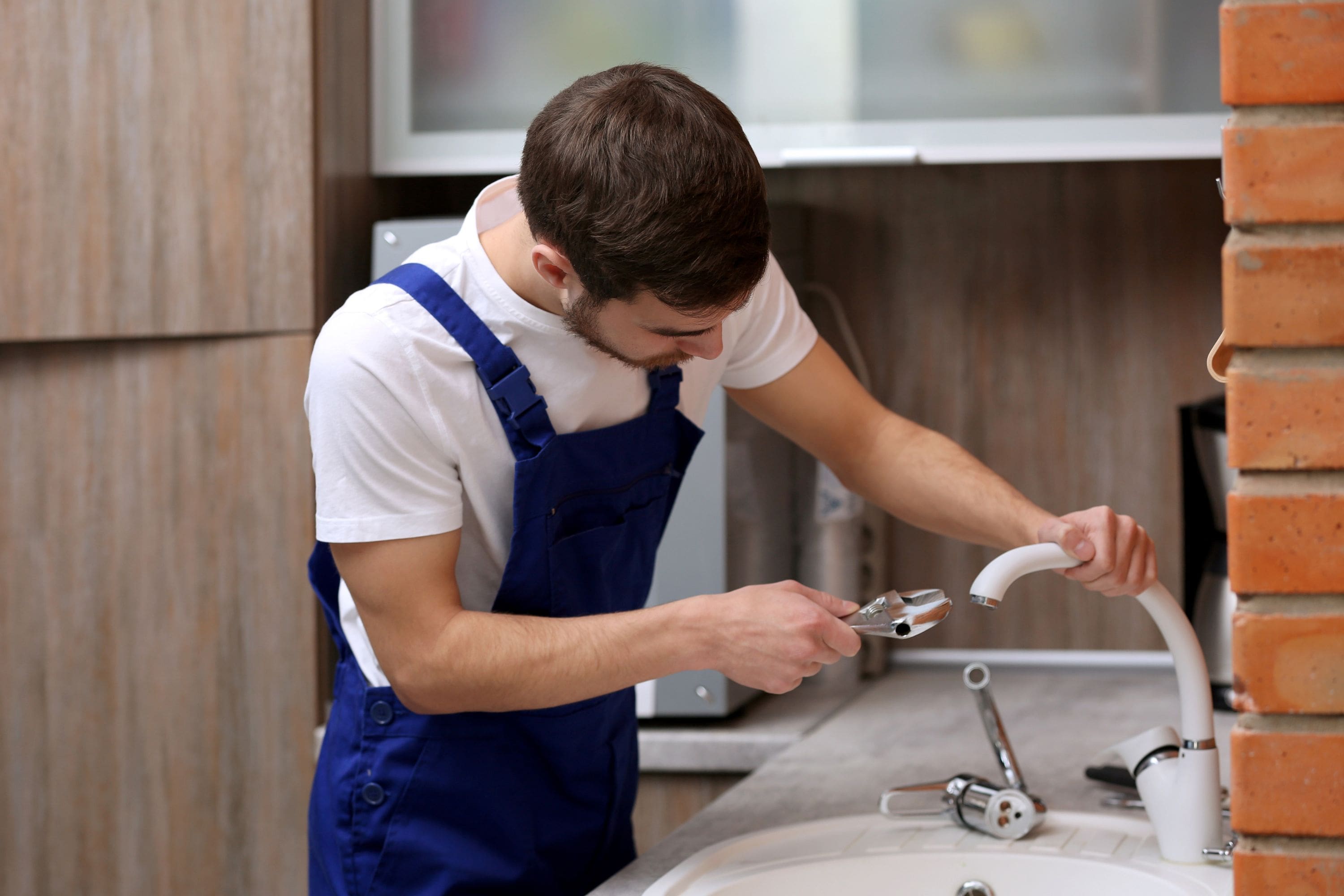Uncovering the Significance of Fixing a Dripping Faucet
Uncovering the Significance of Fixing a Dripping Faucet
Blog Article
Here in the next paragraphs you'll find a lot of really good news around Why Is It Important To Fix Your Leaking Tap/Faucet?.

Trickling faucets could look like a small trouble, but their influence exceeds just the nuisance of the sound. From wasting water to sustaining unnecessary monetary costs and health and wellness threats, neglecting a trickling faucet can bring about various repercussions. In this post, we'll delve into why it's vital to resolve this common family concern quickly and successfully.
Wastage of Water
Environmental Influence
Leaking taps add substantially to water wastage. According to the Epa (EPA), a single tap dripping at one drip per second can throw away greater than 3,000 gallons of water annually. This not only strains water resources yet also impacts communities and wild animals dependent on them.
Financial Expenses
Increased Water Bills
Past the ecological impact, dripping faucets can pump up water costs substantially. The built up waste gradually translates into higher utility costs, which might have been prevented with timely repair services.
Prospective Residential Or Commercial Property Damage
Furthermore, prolonged leaking can cause damage to fixtures and surfaces bordering the tap. Water build-up can cause discoloration, rust, and even architectural problems if left unattended, leading to additional repair expenses.
Health Concerns
Mold And Mildew and Mildew Development
The constant visibility of moisture from a trickling faucet creates an ideal atmosphere for mold and mildew and mildew development. These fungis not only jeopardize interior air quality however additionally position health and wellness dangers, specifically for individuals with breathing problems or allergic reactions.
Waterborne Diseases
Stagnant water in leaking taps can end up being a breeding place for bacteria and other microorganisms, raising the risk of waterborne illness. Pollutants such as Legionella microorganisms thrive in stagnant water, potentially causing significant illnesses when ingested or inhaled.
DIY vs. Professional Repair work
Benefits and drawbacks of Do It Yourself Repair
While some may attempt to take care of a leaking tap themselves, do it yourself fixings feature their own set of difficulties. Without appropriate understanding and tools, DIY efforts can aggravate the problem or result in insufficient repair services, extending the problem.
Advantages of Hiring a Specialist Plumber
Employing a professional plumber ensures that the underlying root cause of the dripping tap is dealt with properly. Plumbing technicians possess the know-how and equipment to identify and fix tap issues successfully, saving time and lessening the threat of further damage.
Step-by-Step Overview to Fixing a Dripping Faucet
Tools Needed
Prior to trying to deal with a dripping faucet, collect the essential devices, consisting of a flexible wrench, screwdrivers, substitute components (such as washing machines or cartridges), and plumber's tape.
Usual Tap Issues and Their Solutions
Recognize the kind of tap and the details concern triggering the drip. Typical troubles include worn-out washing machines, rusty valve seats, or defective O-rings. Refer to manufacturer guidelines or on the internet tutorials for step-by-step advice on repair work.
Safety nets
Normal Upkeep Tips
To avoid leaking taps, do routine upkeep such as cleaning up aerators, examining for leakages, and replacing damaged components promptly. In addition, consider setting up water-saving tools or upgrading to a lot more efficient fixtures.
Relevance of Prompt Repair Works
Addressing leaking taps as quickly as they're discovered stops further water wastage and prospective damages, eventually conserving both water and cash in the future.
Influence On Residential Property Worth
Understanding of Well-Maintained Building
Keeping a residential or commercial property in good condition, including addressing upkeep problems like trickling taps, enhances its perceived worth and value among possible purchasers or renters.
Influence on Resale Worth
Residences with well-kept plumbing components, including faucets, command greater resale values in the property market. Attending to dripping faucets can add to a positive impact during property assessments and arrangements.
Environmental Duty
Individual Payment to Preservation
Taking responsibility for taking care of trickling faucets lines up with wider initiatives towards water conservation and environmental sustainability. Every individual's actions jointly make a significant impact on protecting valuable sources.
Lasting Living Practices
By focusing on prompt repair services and embracing water-saving routines, people add to sustainable living techniques that benefit both present and future generations.
Conclusion
Dealing with a dripping faucet goes beyond simple ease; it's a crucial step toward preserving water, lowering monetary costs, and securing health and building. Whether with do it yourself repair work or specialist help, doing something about it to take care of trickling faucets is a little yet impactful method to advertise liable stewardship of resources and add to a much healthier, much more lasting future.
How to Fix a Dripping or Leaky Faucet
A leaking faucet is one of the most common problems that homeowners encounter, but it being commonplace doesn’t make it any less annoying. The constant drip drip drip of a leaking bathtub faucet, showerhead, or sink tap can disturb your home’s serenity. Left neglected, a dripping faucet can also result in higher water bills and discoloration or mold growth in your sink or plumbing fixtures.
Fortunately, you don’t have to be a trained plumber to know how to stop a dripping faucet. With some basic tools, replacement parts, and a little patience, leaky faucet repair is a breeze. In this article, we’ll explain what causes dripping faucets and how you can fix them.
What Causes a Leaking Faucet?
Kitchen and bathroom faucets come in all manner of designs, but most involve some combination of valves, O-rings, seals, and washers. The O-ring is usually the weakest link, but any one of these pieces can wear down over time. Heat, moisture, temperature fluctuations, minerals, mold, and movement can contribute to warping and corrosion, breaking the watertight seal. This just comes with the territory of being a homeowner. Everything is always subject to wear and tear, and some component parts of your appliances and fixtures need to be replaced on occasion. At least replacement O-rings are cheap!
More rarely, dripping faucets can be a symptom of excessively high water pressure. Were this the case in your home, you would probably notice that the leak is not isolated to one faucet. Water pressure issues are harder to resolve on your own. We recommend contacting a professional plumber if you suspect your water pressure is too high.
How to Fix a Dripping Faucet
Pipe wrench or monkey wrench Allen wrench set Screwdrivers Old towel or rag Shut off the water.
Before you do anything, you need to turn off the water to keep from drenching your kitchen or bathroom. You should find a valve under the sink and against the wall. Once you’ve turned this valve, try turning the faucet on to confirm that the water source has been cut off.
If you can’t locate your local valve for the faucet you’re working on, you can always shut off the water to the house at the main valve. Of course, this will prohibit anyone from using the sinks, showers, or toilets while you’re working on the faucet that’s giving you trouble.
Plug or block the drain.
You’ll be disassembling the faucet and removing some small bits of hardware. Plug the drain with a stopper or rag to avoid the possibility of a small screw falling into your P-trap.
Take apart the faucet assembly.
There are several varieties of kitchen and bathroom faucets, each with its own manner of assembly. For detailed instructions on how to disassemble your faucet, you can refer to the fixture’s manual or contact the manufacturer. If you know whether you have a ball, disc, cartridge, or compression faucet, you can find detailed schematics online.
In general, you need to begin by removing the faucet handles. You might notice a small screw that you’ll need to remove with a screwdriver or Allen wrench. If you don’t see any visible securing hardware, it’s likely hidden under a decorative cap that can be unscrewed or popped off with flathead screwdriver.
Remove each piece methodically, consulting a schematic when necessary. Take notes or arrange the pieces in such a way to make it easier to correctly reassemble the faucet later.
Remove the cartridge.
Once you’ve removed the handles and securing hardware, you should be able to remove the valve cartridge or stem. Some cartridges will slide right out. Other faucet models will require you to loosen a nut with a pipe wrench before you can remove the valve stem.
Examine the exposed hardware.
With the cartridge or stem removed, inspect the component parts. Check the rubber O-rings for wear and tear. Also examine the seat washer for corrosion or other damage. These pieces are usually the responsible parties for a dripping faucet, but it’s worth inspecting the other component parts while you have the faucet disassembled.
Find replacement parts.
Once you’ve identified which faucet component has failed, find an identical replacement. Your local hardware store should have O-rings, seat washers, and other standard components in stock. If you have a luxury or uncommon faucet, you may have to contact the manufacturer for a replacement part.
It’s a good idea to take your old parts with you to the hardware store so you can compare them with the store’s inventory and be sure you’re purchasing the correct replacement.
Reassemble the faucet.
With your new parts in hand, reconstruct the faucet and handles. Don’t be tempted to overtighten screws or nuts. You might think this could create a better seal, but it can instead damage or bend a delicate part of the assembly and create a new problem for you.
Turn on the water and test the faucet.
The only thing left to do is test your work. Unplug the sink, turn the water back on, and try the faucet. Congratulate yourself on a job well done!
https://www.libertyhomeguard.com/how-to-fix-a-dripping-or-leaky-faucet/

I'm very enthusiastic about How to Fix a Dripping or Leaky Faucet and I am assuming you appreciated our post. Please take a moment to distribute this page if you appreciated it. I praise you for being here. Don't forget to check up our site back soon.
Report this page